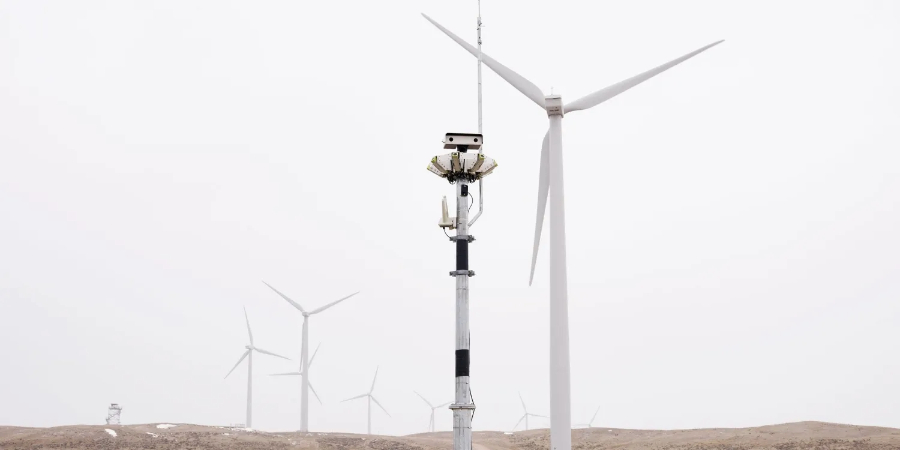IdentiFlight to protect Wildlife from Wind Collisions
Bird deaths from wind turbines are a complex problem with no easy answers. Many factors can cause bird deaths, including turbine type, turbine location, and time of year. An estimated 234,000 to 328,000 birds are killed by storms in the United States each year, according to the U.S. Fish and Wildlife Service. This number is also lower compared to birds killed by other human activities, such as crashing into buildings and cars. But bird numbers are still increasing, so it’s important to find ways to reduce the number of birds killed by wind turbines. It is estimated that domestic cats kill between 13 billion and 4 billion birds worldwide each year. However, it is important to develop technology to reduce the impact of wind turbines on bird life and the entire environment.
Wind turbines and their effects
Wind turbines have both positive and negative effects on biodiversity. Wind turbines can also create new habitats for birds and bats, help reduce pollution, and increase productivity. But wind turbines also kill birds and bats and disturb wildlife. The overall impact of wind turbines on biodiversity depends on many factors, including the type of turbine, its location, and the type of wildlife present. The potential impact of wind turbines on biodiversity should be carefully evaluated before construction. But bird numbers are still increasing, so it’s important to find ways to reduce the number of birds killed by wind turbines. There are many ways to stop bird deaths from turbines.
Artificial Intelligence to Safeguard Birds
The undemanding way to keep birds and bats away from wind turbines is to not establish wind turbines in areas where substantial numbers of birds and bats fly. But this isn’t always easy, because many open spaces devoid of trees that fascinate birds and bats are also important places to collect air. The best solution is to choose a place where many birds do not have problems. many wind facilities are located far from the existing power grid and require the construction of new powerlines, which are yet another source of bird mortality. Blades can be designed with patterns or colors that are less visible to birds, reducing the risk of collision. The U.S. Fish and Wildlife Service has developed wind power and turbine installation guidelines to help developers avoid conservation. Another new way to reduce bird deaths is to detect incoming birds and then turn off turbines so they can pass safely. Artificial intelligence sensors equipped with computer vision have been installed to detect birds from safe places and send alerts to human task forces. For years, the industry has tried to deploy technologies to prevent bird deaths. Some companies sell pulse radar systems that can automatically deactivate turbines when birds of any species are detected.
Arduino Nanotechnology and its Applications
Arduino Nano is an open-source microcontroller board based on the Microchip ATmega328P microcontroller (MCU). It is a small breadboard-friendly board that can be used for many tasks, from simple educational projects to a variety of business applications. The Arduino Nano can be used to control dead birds in wind turbines by detecting the birds and taking action to prevent them from attacking the blades. This can be done using a variety of sensors such as ultrasonic, radar, or infrared sensors. The system is built with the help of LoRa(Long-Range)transceiver modules as a transmitter beacon and a receiver beacon which are separated by a long distance. The transmitter is attached to the bird and the receiver beacon is fixed to the windmill. Whenever a bird arrives within the 500m radius, a signal is passed from the transmitter to the receiver and hence the receiver detects the bird. This information is transferred to the user via a mobile application, which is designed to display the web view of the web interface. When the bird reaches the 100m radius an alert signal is passed, indicated by the buzzer, showing that the bird is in danger. The Arduino Nano can be used to catch birds near the blower and then prevent them from attacking the blades. This can be done using a variety of sensors such as ultrasonic, radar, or infrared sensors. When a bird is detected, the Arduino Nano can be programmed to do many things, such as sounding an alarm that can alert the wind turbine operator to find the bird. Stop the turbine, this will prevent the blade from moving and hitting the bird. Disturbing the birds can be done by using noise or lasers to distract the birds from the turbines.
Source
- https://www.energetica-india.net/news/identiflight-to-protect-avian-wildlife-from-turbine-collisions-at-masdar-wind-farm-in-uzbekistan
- https://www.elprocus.com/an-overview-of-arduino-nano-board/
- https://abcbirds.org/blog21/wind-turbine-mortality/
- https://birdfact.com/articles/do-wind-turbines-kill-birds
- https://windmillskill.com/blog/windfarms-kill-10-20-times-more-previously-thought
- https://www.treehugger.com/ways-to-protect-bats-and-birds-from-wind-turbines-4868663

